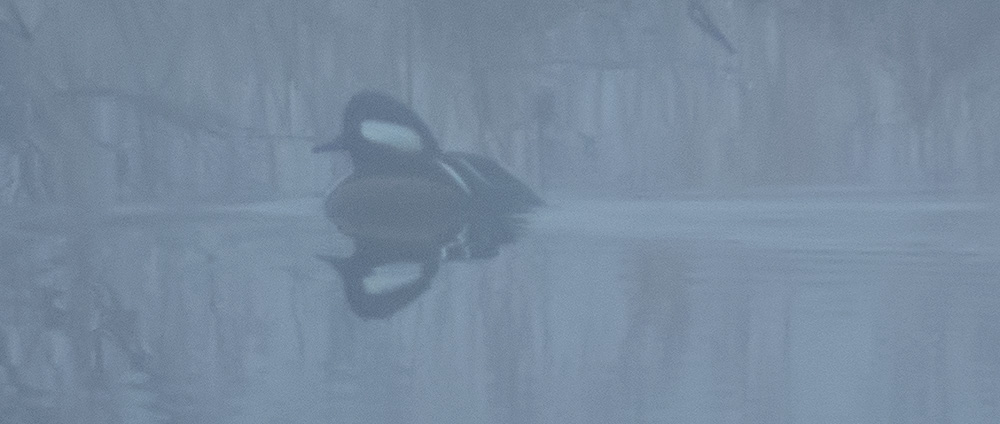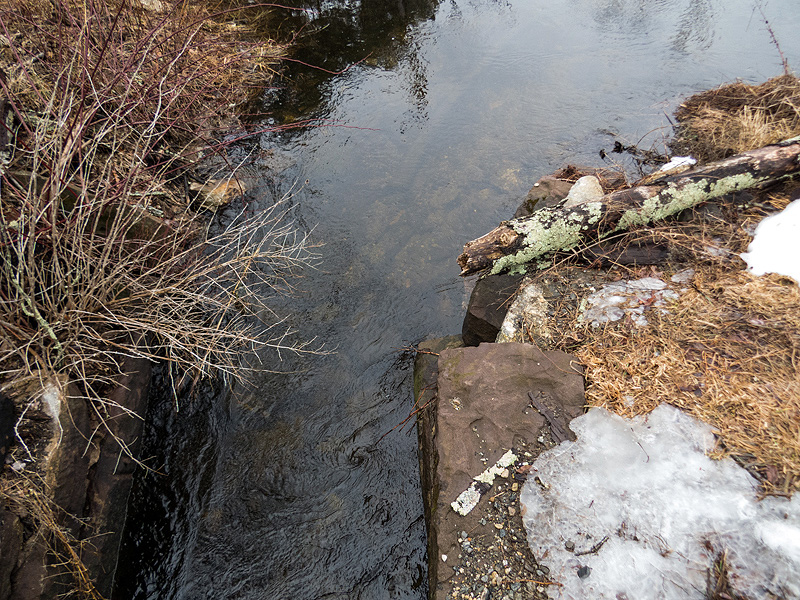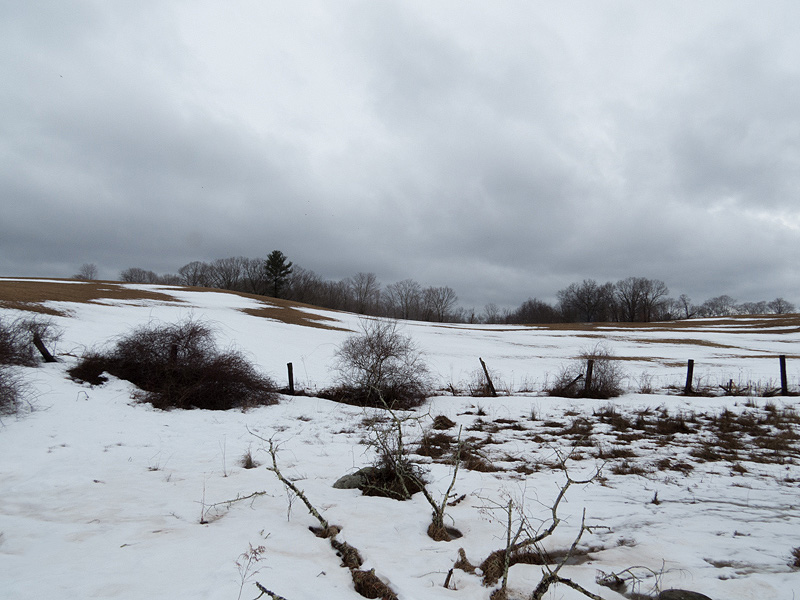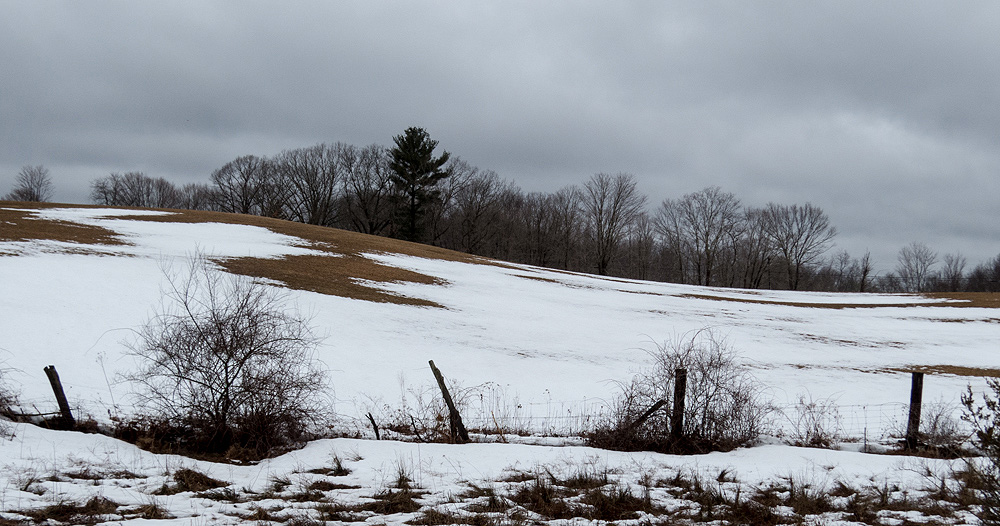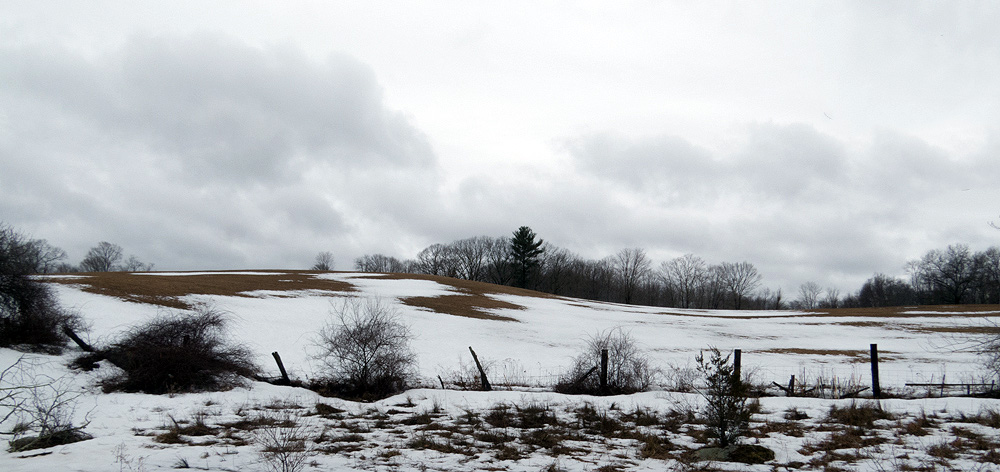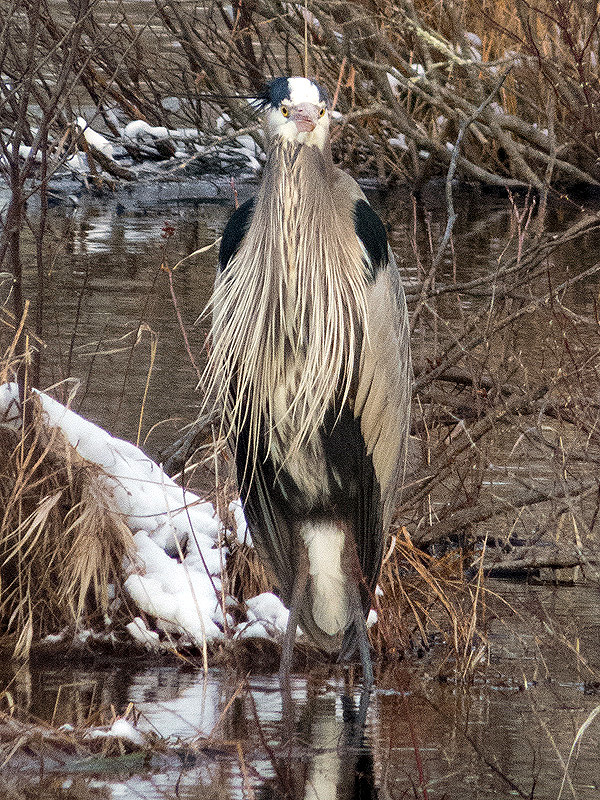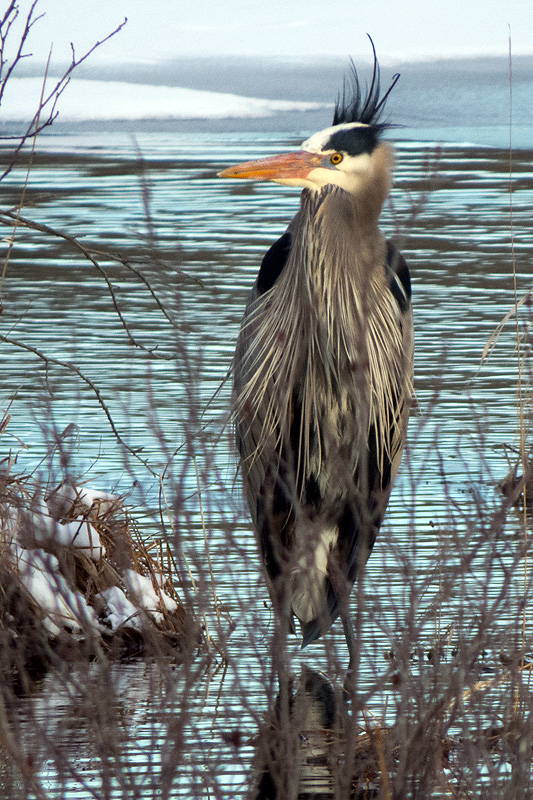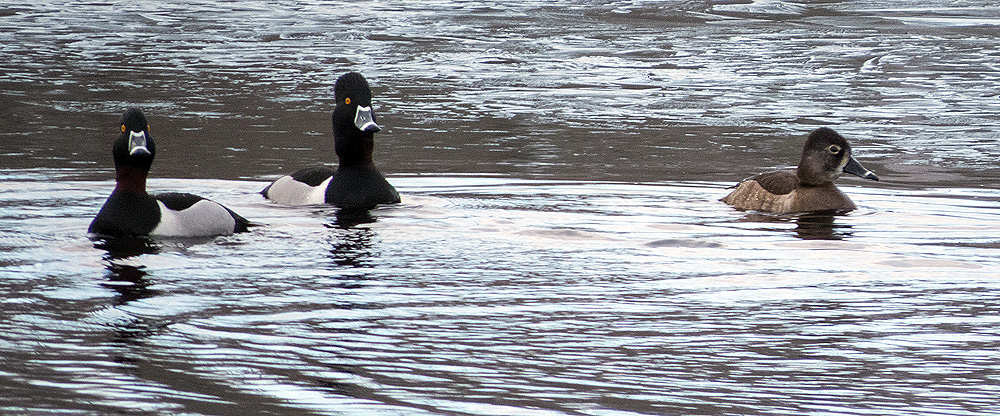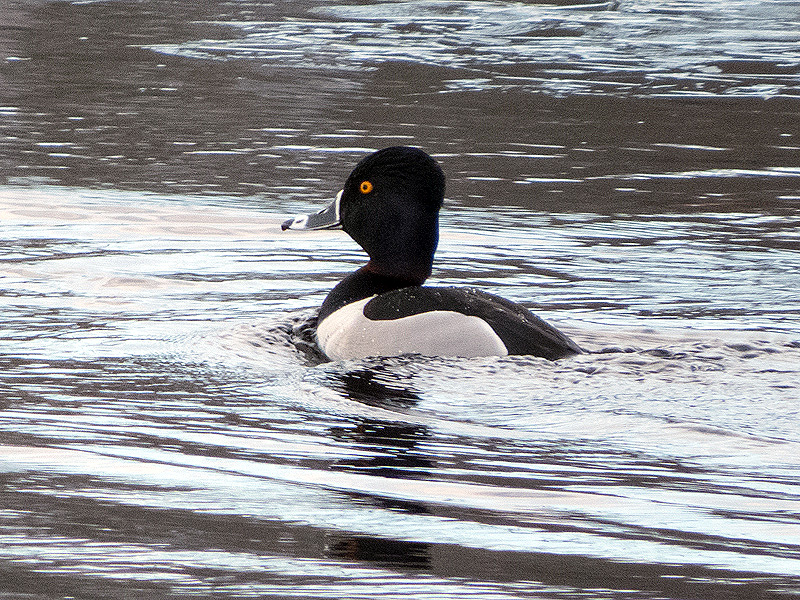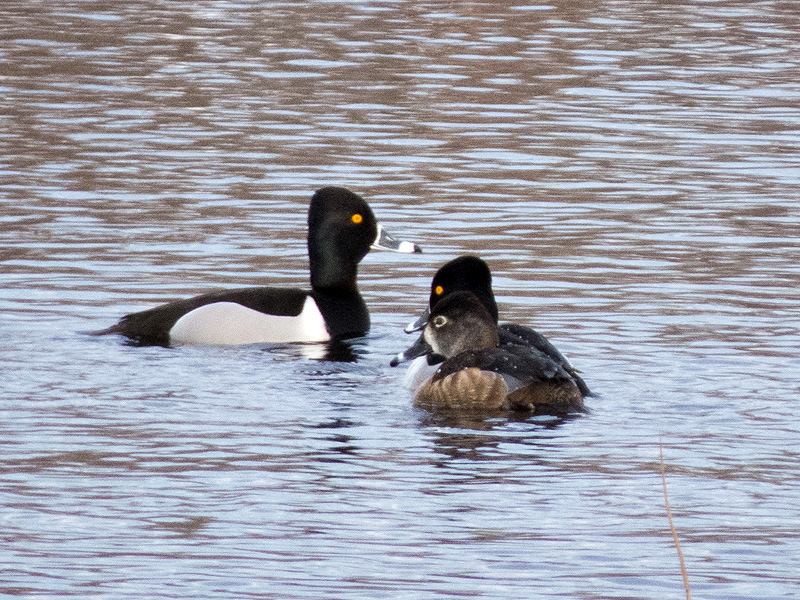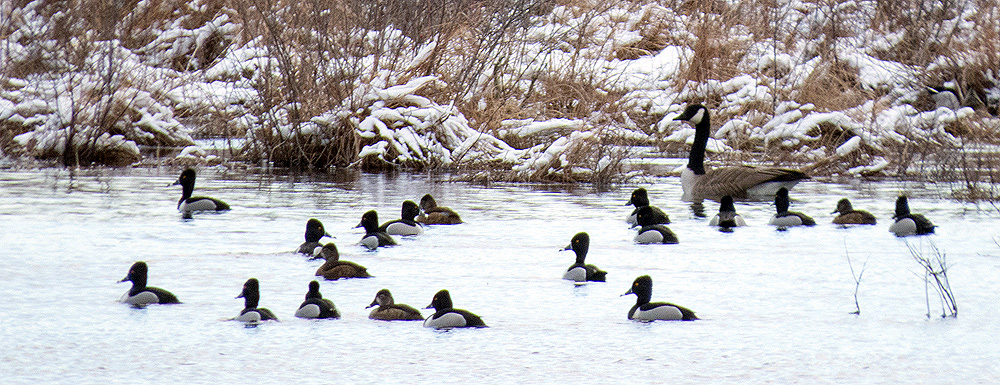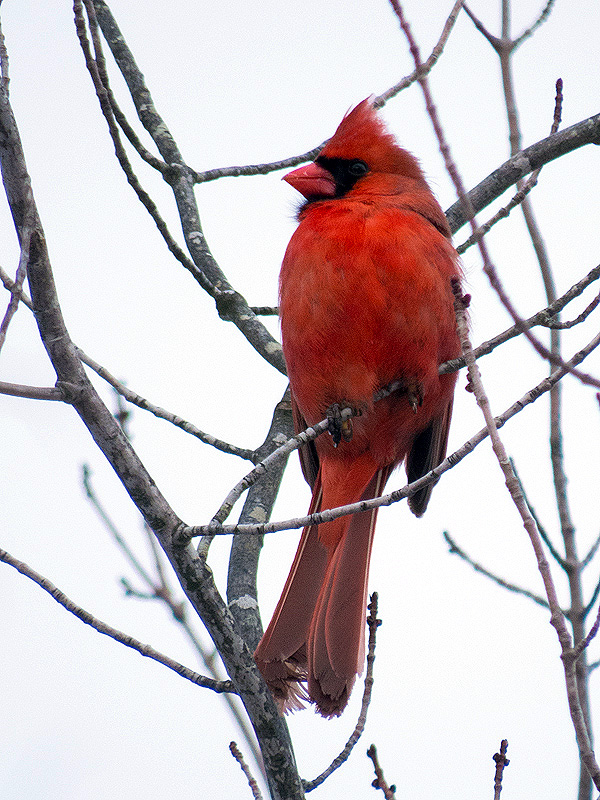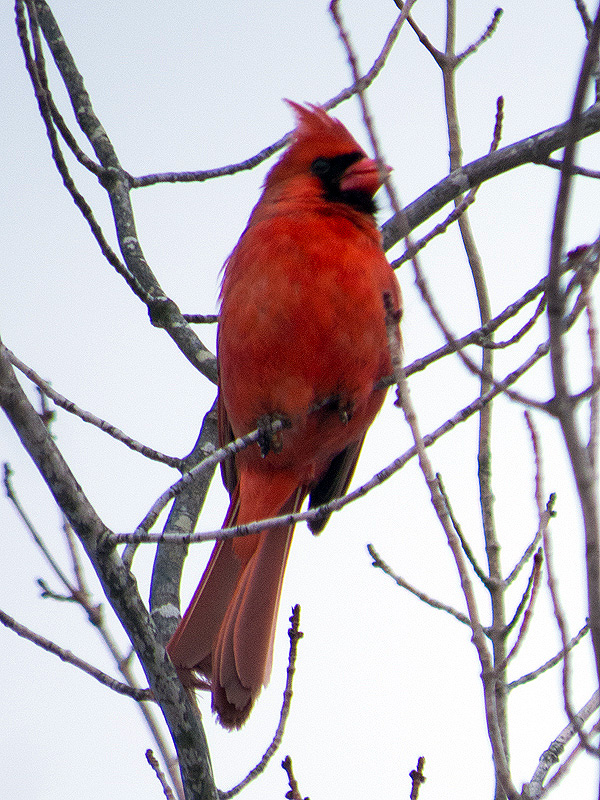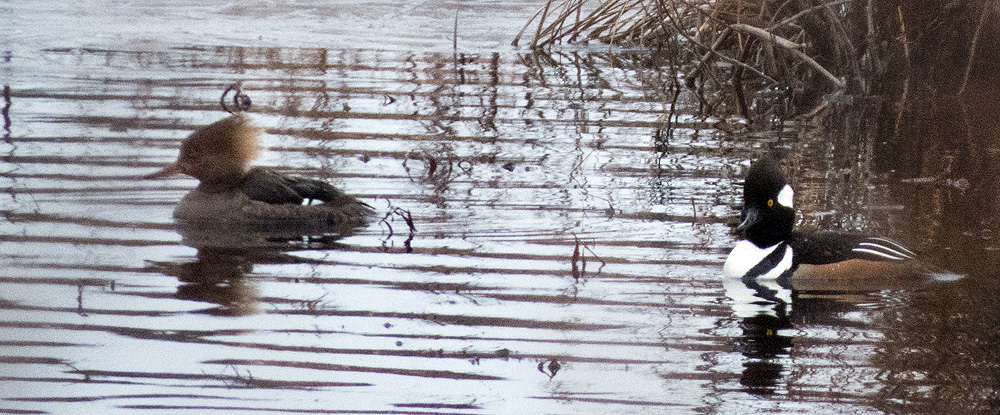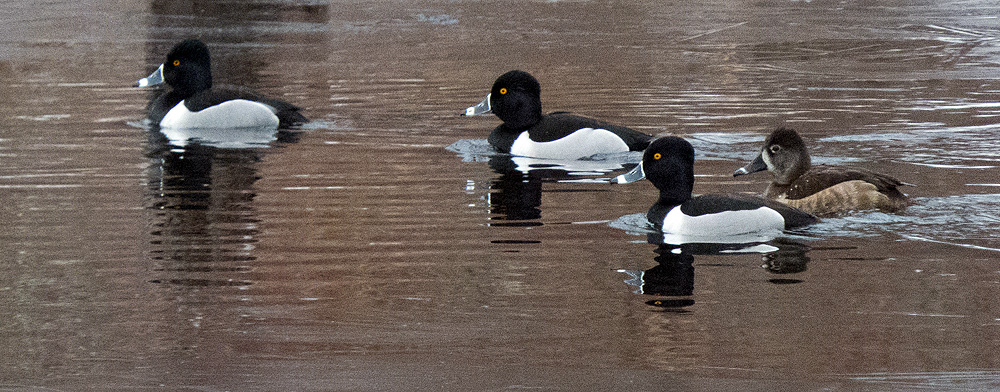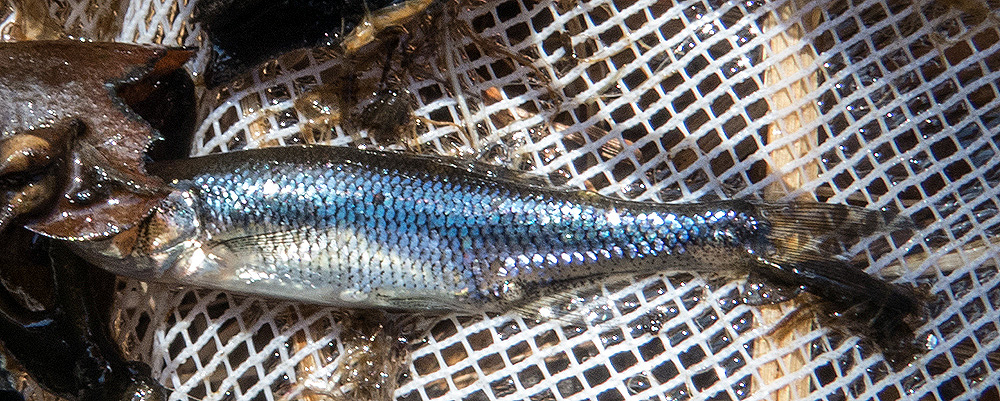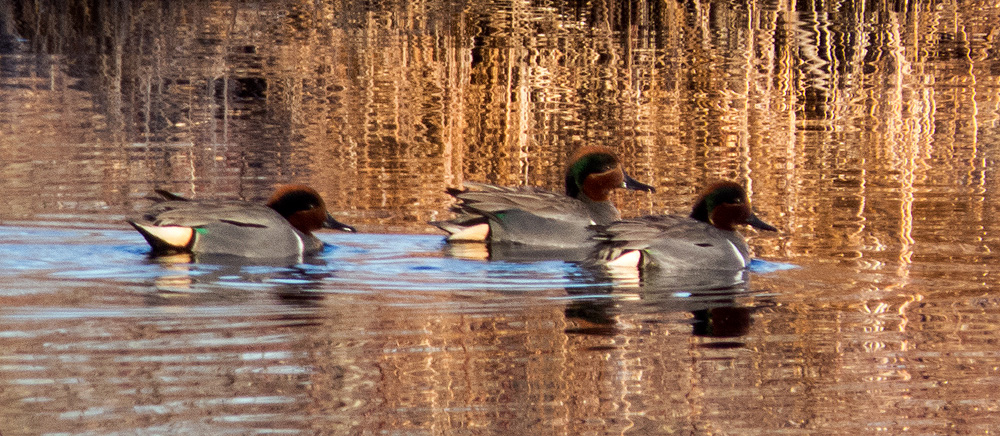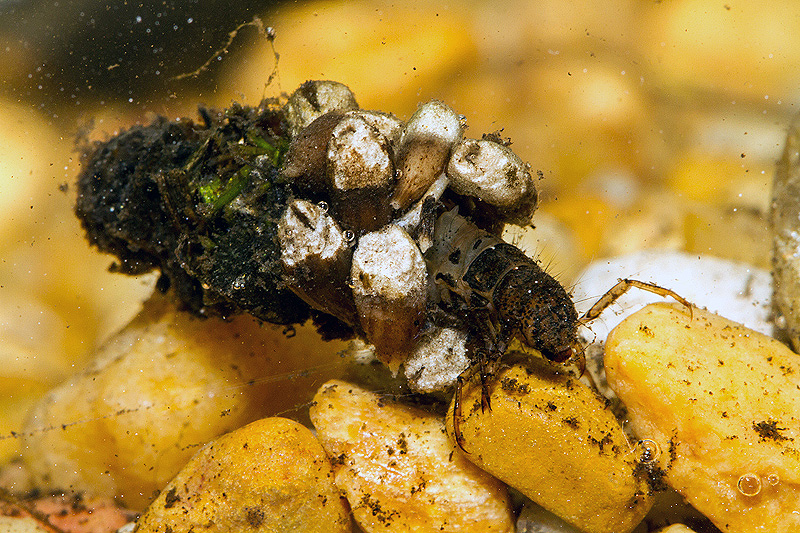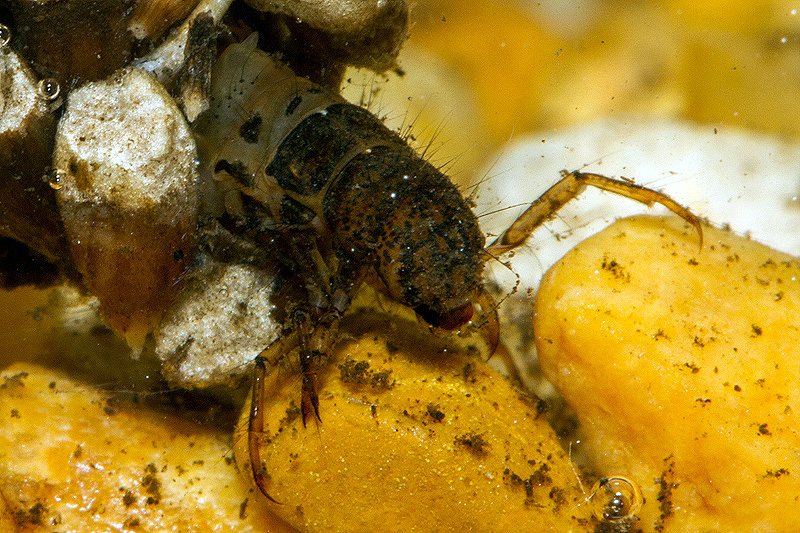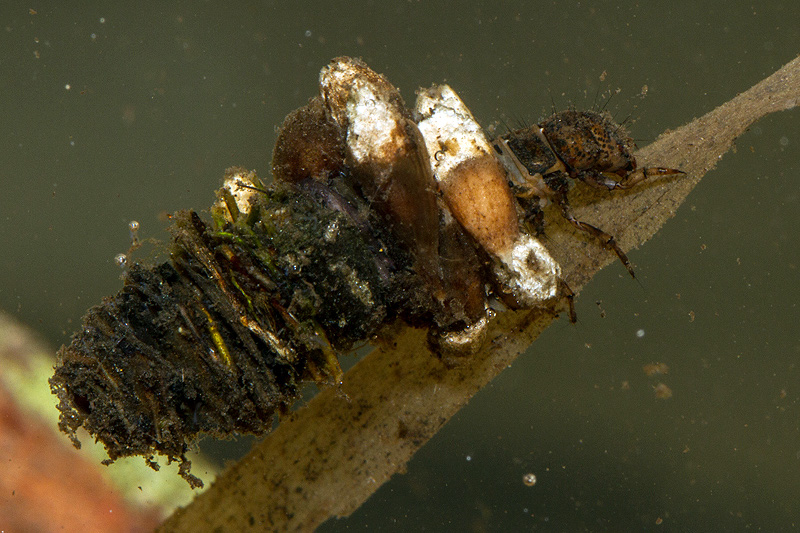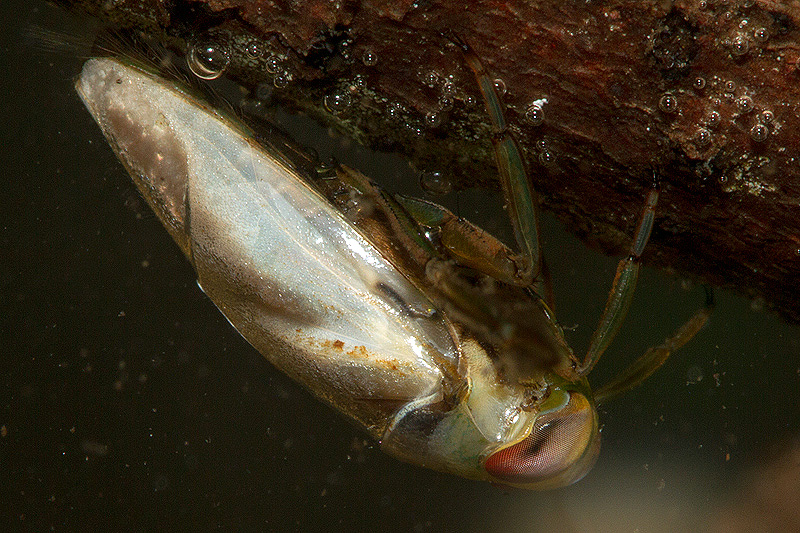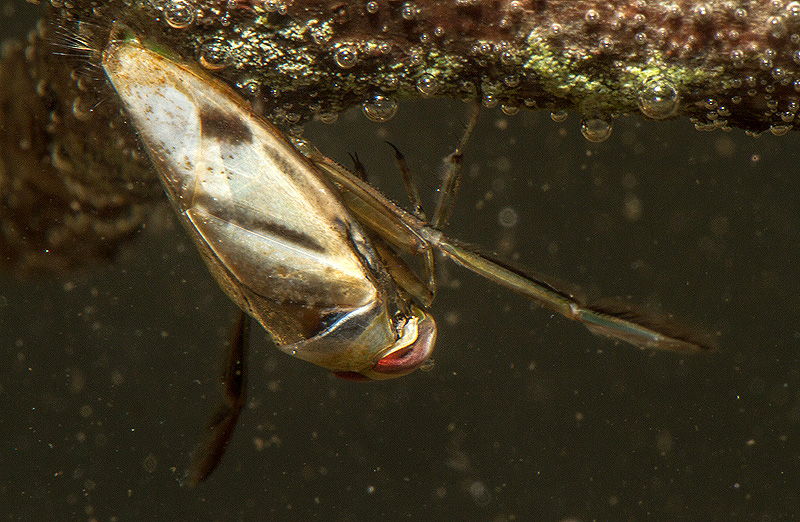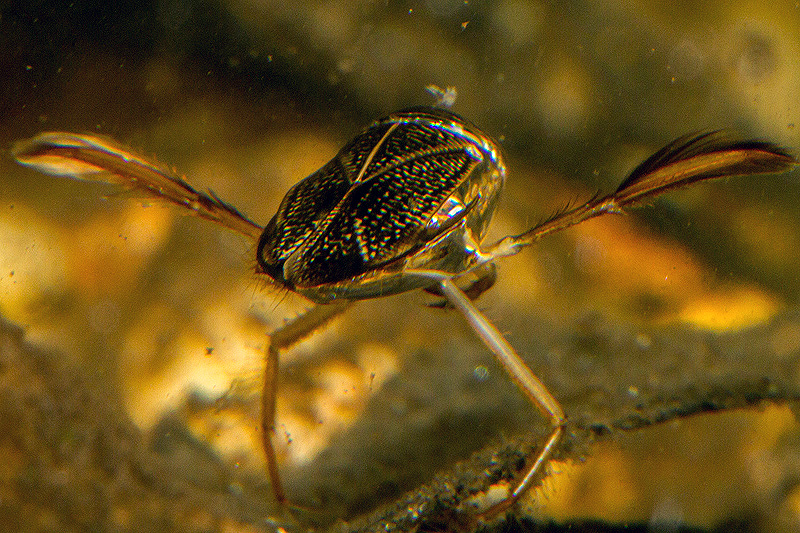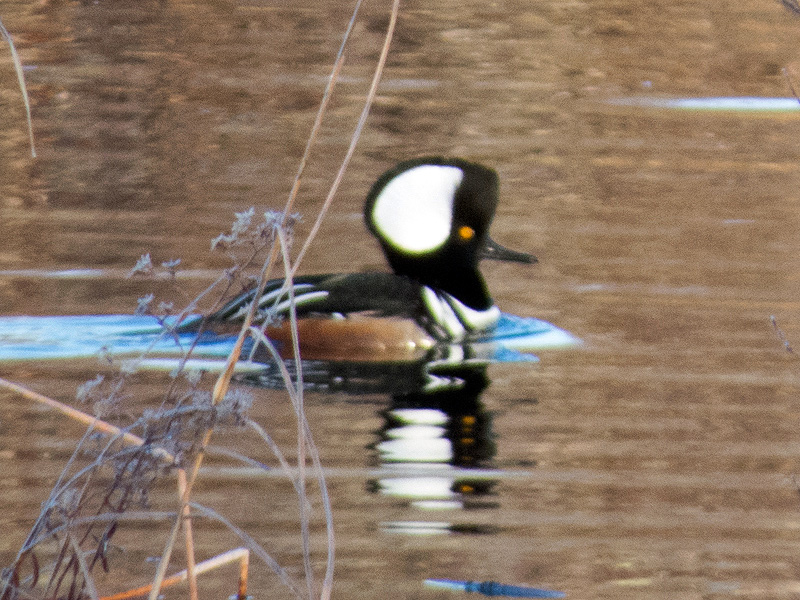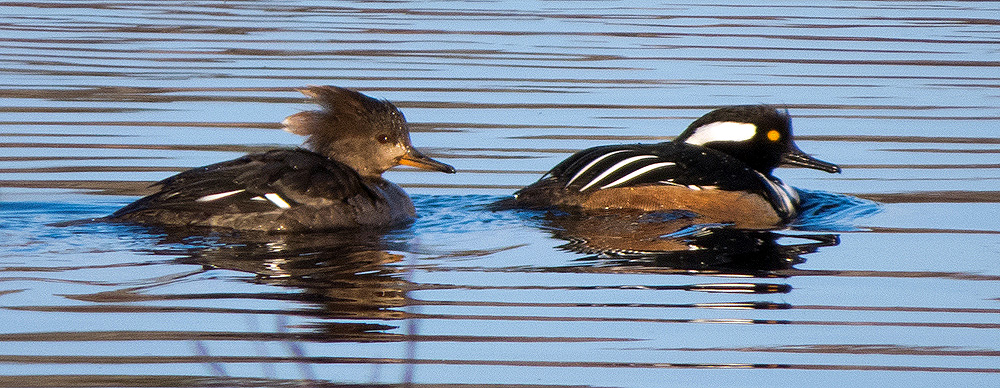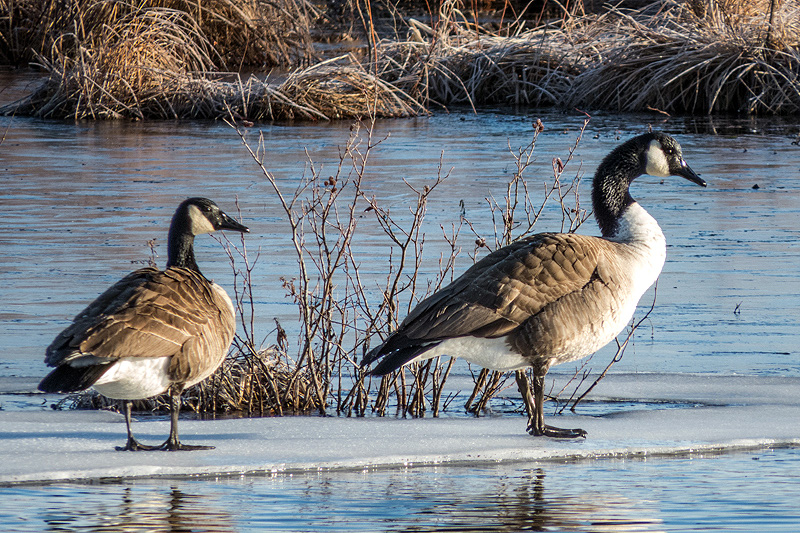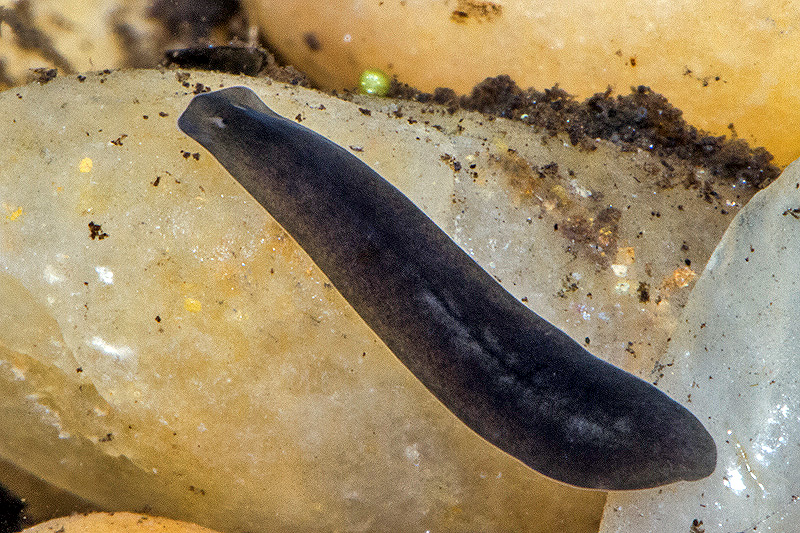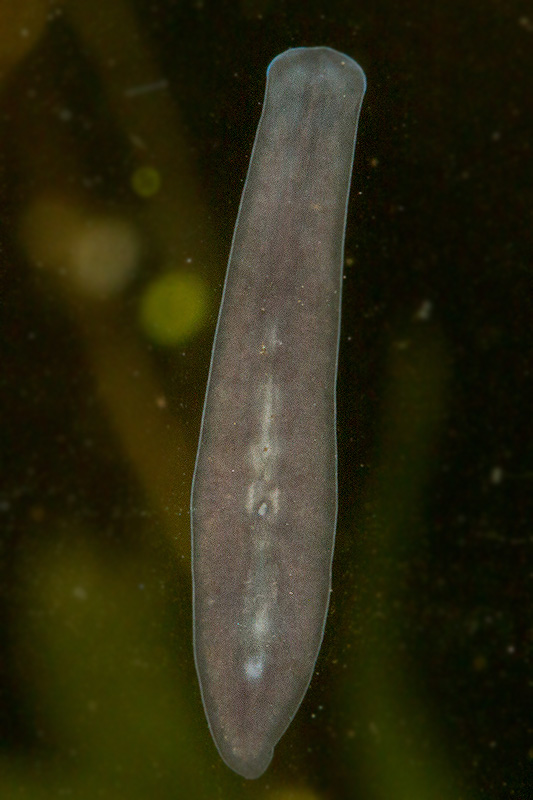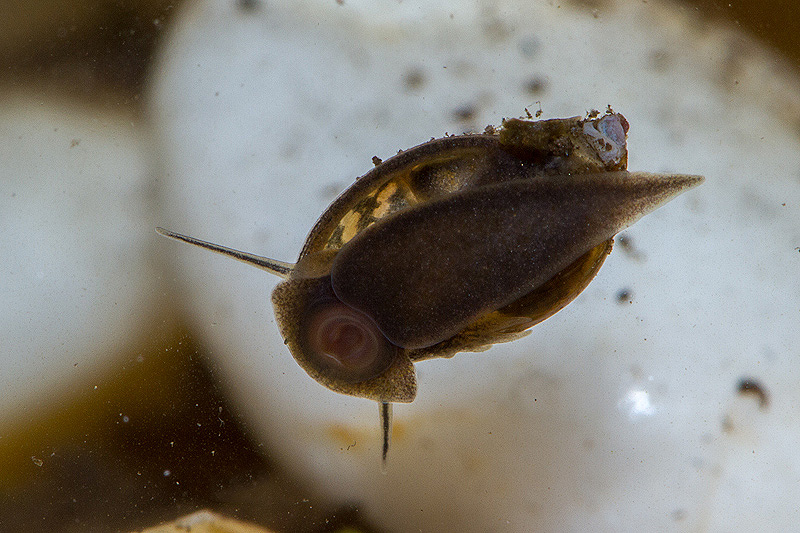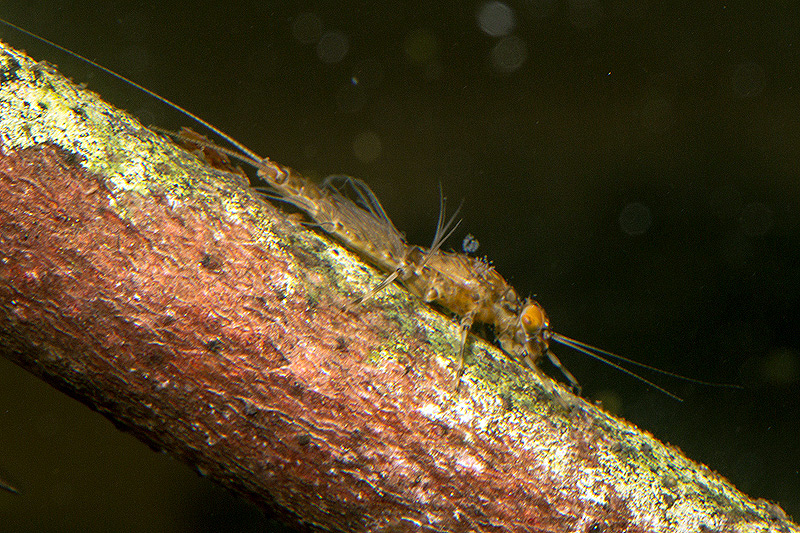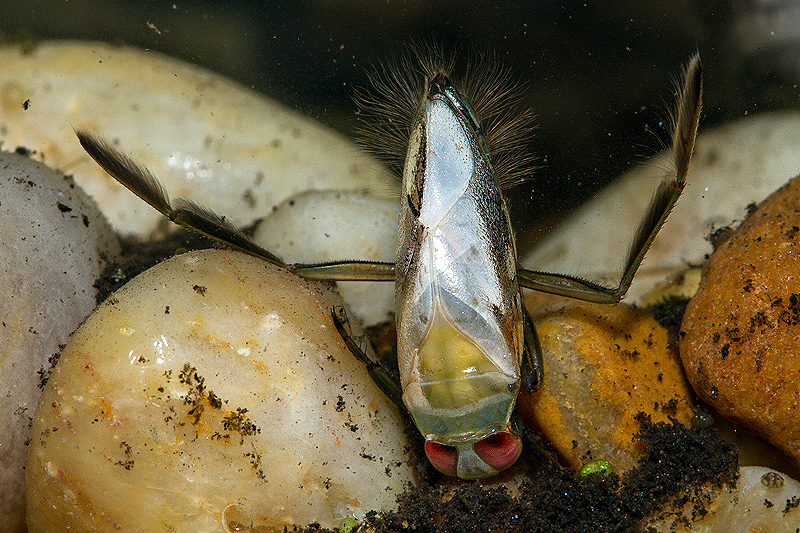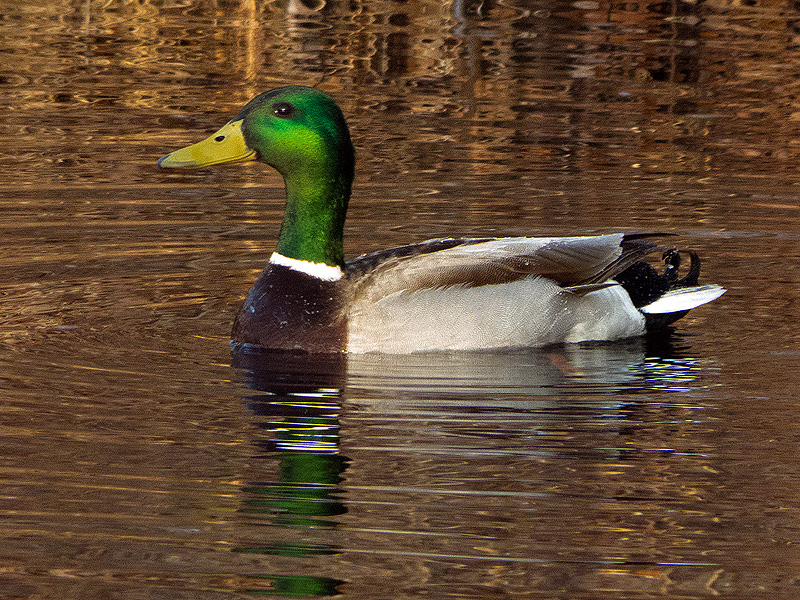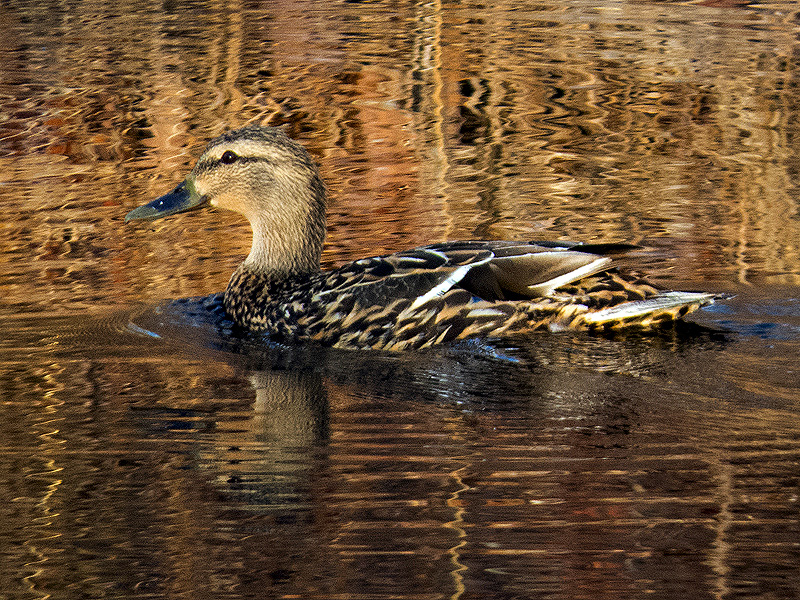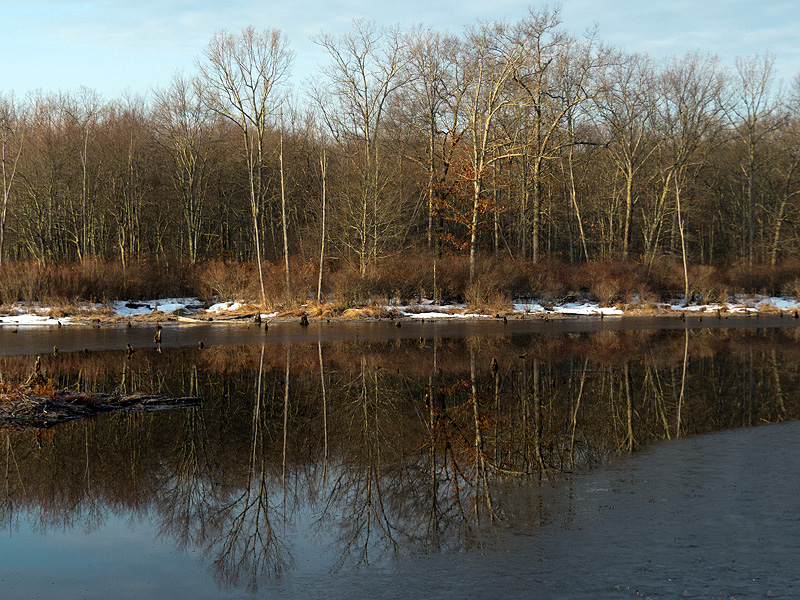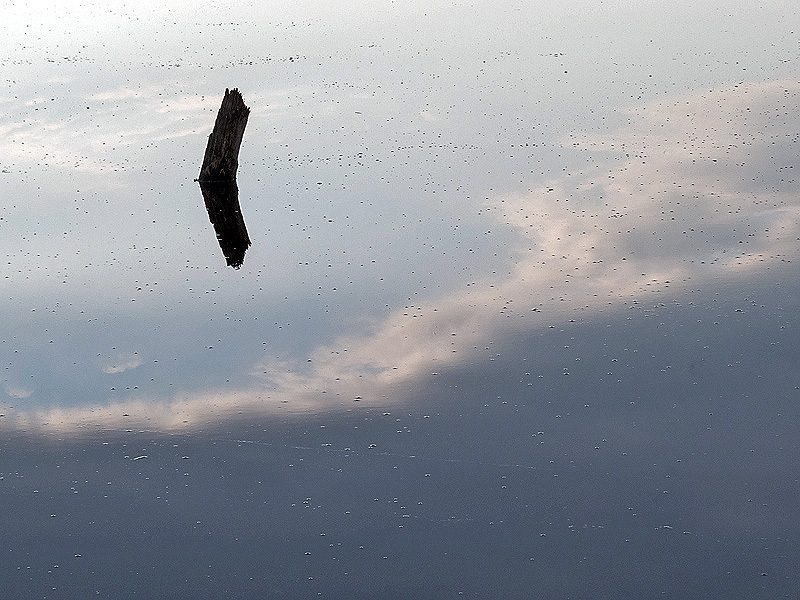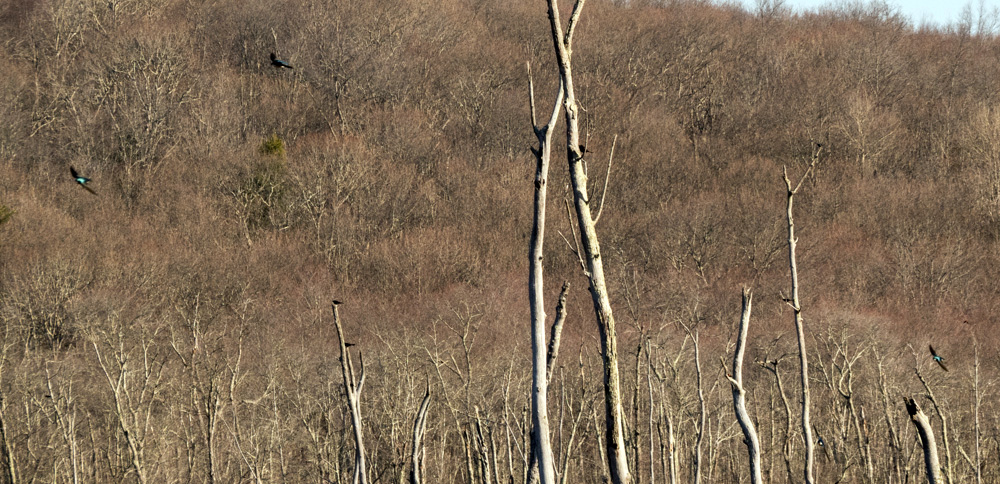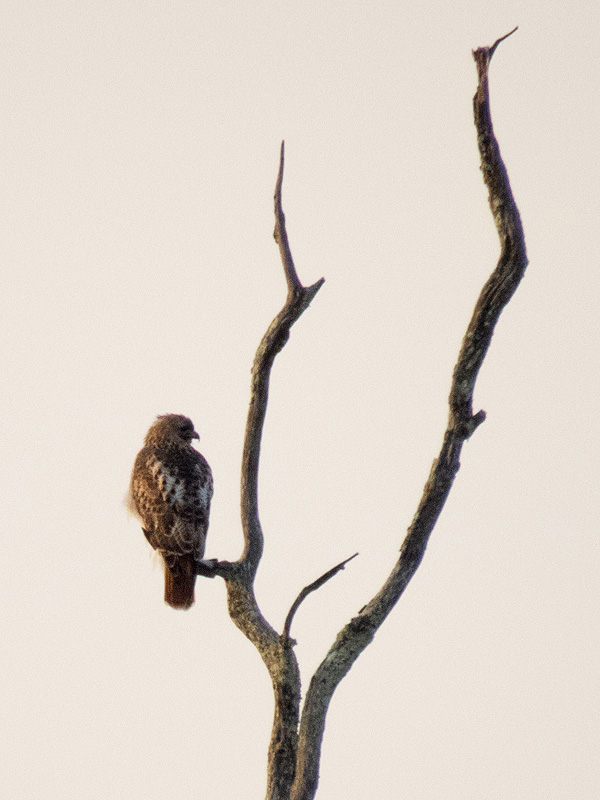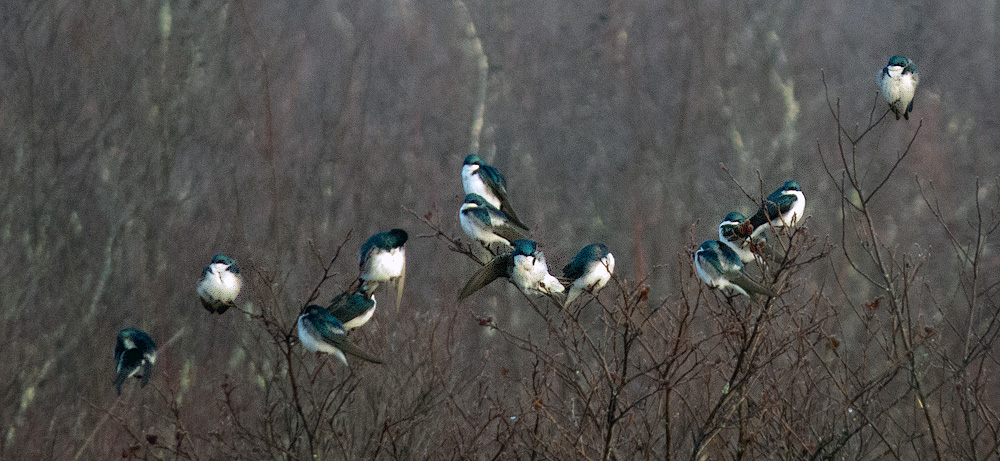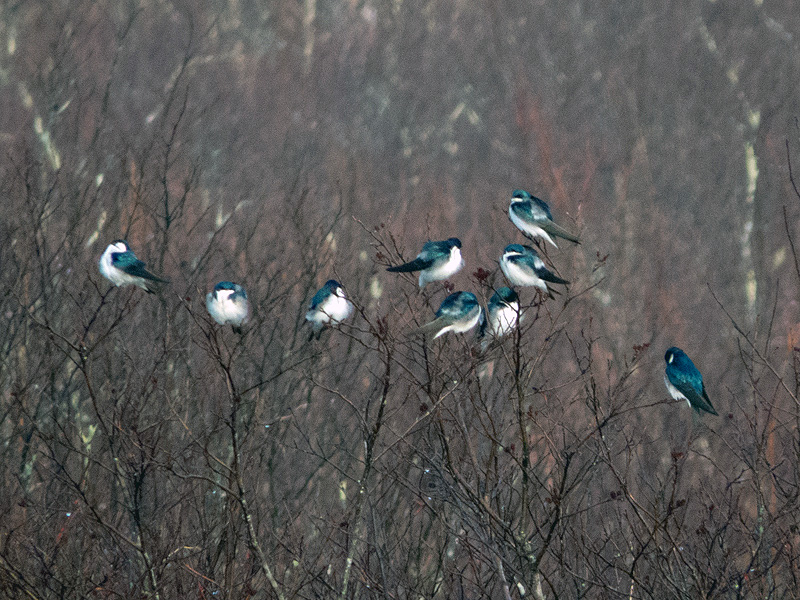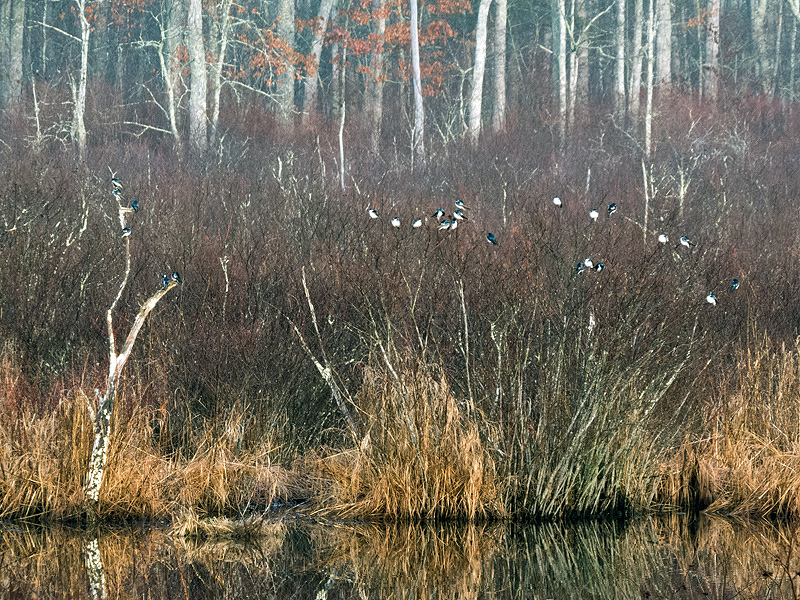Along the Air Line... 2015 - Spring, Part 1 The Air Line Trail in Eastern Connecticut - Stan Malcolm Photos |
mHome Page Stan's FlickR Albums |
March 26th. The first Hooded Merganser (Lophodytes cucullatus) I've seen at the marsh this year. Also the first significant open water on the marsh as temps "soar" to the high 30s overnight. This bird was about as far across the marsh from me as possible, and shrouded in fog. |
March 27th. A look at the former heron roost and marsh east of Cook Hill Road in Lebanon. |
Only the vestiges of two former nests remain. |
When the outlet stream was bridged last year, debris was removed, resulting in virtual draining of the marsh. I believe this contributed to the herons abandoning the site where in previous years there had been as many as eight nests. It would be a simple matter of placing some debris in this narrow gap and hoping beavers finish the engineering of a new dam. |
Despite significant rain and warm temps for several days, much snow remains. |
|
|
|
March 29th. First Great Blue Heron (Ardea herodius) that I've seen on the marsh this year. |
It seems a particularly dark colored one. |
|
Whispy head feathers caught in the breeze. |
Lots of Ring-necked Ducks (Aythya collaris). |
They take their name from the barely distinguishable brown/maroon collar on their necks. |
|
|
Fifteen males to four females. |
I don't often see Northern Cardinals (Cardinalis cardinalis) at the marsh. |
|
March 30th. A pair of Hooded Mergansers (Lophodytes cucullatus). |
|
The Ring-necked Ducks (Aythya collaris) were still around, though they will likely move on soon. |
|
|
|
While searching for aquatic insects in the afternoon, I netted this small fish - less than 2" long. My best guess is an Eastern Silvery Minnow (Hybognathus regius) but I could use some help from someone who knows the minnows and shiners. |
A beautiful fish in the sunlight. |
A bit shy. (I released it, naturally.) |
March 31st. Three male Green-winged Teal (Anas crecca carolinensis), an uncommon transient visitor to the marsh. |
|
This year, I'm going to try adding another dimension to my exploration of Raymond Brook Marsh, adding photos of creatures that live under the water. This is a Caddisfly (Order Trichoptera) larva in a case made of debris from the bottom. |
|
|
These are Backswimmers (Family Notonectidae). The swim and rest with their backs downwards using their oar-like legs for propulsion. |
Photos are taken in a small freshwater aquarium, stocked with substrate and detritus much like the bottom of the marsh. |
The back end of a Water Boatman (Family Corixidae). Like Backswimmers, their rear legs act like oars. Learn more about Water Boatmen. |
Watch Water Boatmen swimming, resting, and grooming. |
April 1st. A lousy photo of a male Hooded Merganser (Lophodytes cucullatus) with erect crest. |
And a pair of Hooded Mergansers (Lophodytes cucullatus). |
A shy male Wood Duck (Aix sponsa) in the background. |
Canada Geese (Branta canadensis) are pairing up. |
|
Back at the aquarium, a surprise! I can't recall the last time I've seen a freshwater Planarian outside a biology lab. The pair of pale spots at the head end (upper left in this photo) are light sensitive. Learn more about planarian flatworms. |
Underside. Its "Mouth" is somewhere in the middle of the body, perhaps at the light spot? |
Nifty little snail. |
A Mayfly nymph (Order Ephemeroptera). |
A better picture of a Backswimmer (Family Notonectidae), clearly showing the hairs at the sides of the abdomen and swimming hairs on the hind legs. The silvery sheen is from the air bubble trapped under the wings. Head down in the gravel, this seems an odd place to rest, but it soon moved on. |
April 2nd. Amid the excitment of less common ducks coming through, it's easy to forget the Mallards (Anas platyrhynchos) that stay around through all but the worst of winter. |
|
Most of the snow is gone, though much of the marsh ices over at night. |
\
Blue sky and light clouds. |
|
April 5th. Easter. Lots of Canada Geese (Branta canadensis) calling on the marsh. |
|
First Tree Swallows (Tachycineta bicolor) I've seen this year. Three flying in this distant shot. |
April 6th. A far distant Red-tailed Hawk (Buteo jamaicensis). |
Tree Swallows (Tachycineta bicolor); today taking a break from flight in pursuit of insects. |
|
I hope more arrive and stay. In recent years, populations at the marsh have been way down. |
April 8th. Several Green-winged Teal (Anas crecca carolinensis) still on the marsh. |
